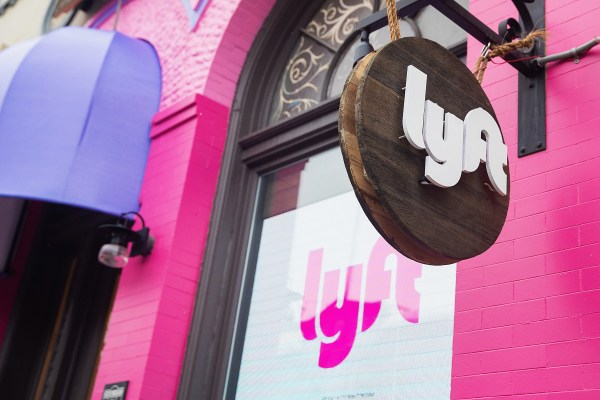Lyft beat the Street on revenue in the fourth quarter, but it wasn’t enough to assuage investors who reacted to the ride-hailing company’s weak guidance for the first three months of 2023.
Lyft lowered expectations for revenue in the first quarter to $975 million, a decline of about $200 million. Analysts had expected the company to promise $1.09 billion in revenue. That guidance sent shares plummeting 25% in after-hours trading Thursday to $12.13.
Logan Green, Lyft’s CEO and co-founder, said the colder weather would lead to a drop in ride-hail and bike and scooter usage, putting pressure on the company’s Q1 guidance.
“Prime time is coming down dramatically quarter over quarter because of increased driver supply,” Green added, noting that having more drivers is good for keeping Lyft’s service levels competitive, which could lead to better long-term growth. Green also attributed Lyft’s lowered Q1 guidance to a slightly reduced base pricing “to remain competitive with the industry.”
Lyft surpasses revenue expectations
Lyft reported Thursday $1.2 billion in revenue in the fourth quarter, a 21% increase from the $969.9 million it generated in the same year-ago period. Revenue for all of 2022 reached $4.1 billion, a 28% year-over-year increase versus $3.2 billion in 2021.
Lyft’s revenue, active rider and revenue per active rider results beat analyst expectations, closing out the year with 20.36 million active riders and $57.72 in revenue per active rider, which is up 8.7% and 11.5% from last year.
Still, shareholders were more affected by the company guidance for the first quarter.
Lyft needed a win after its third quarter earnings report, when the company missed Wall Street estimates for revenue and active riders, causing its stock to tank 22%. Despite the beat, Lyft shares dropped 3.16% at market close and are trading nearly 24% lower in after hours.
Lyft’s net loss was $588.1 million in the fourth quarter, compared to $283.2 million the year prior. Lyft attributes much of that loss to $201.3 million of stock-based compensation and related payroll tax expenses.
The company also reported a loss of $29.5 million in employe severance and other employee costs, as well as $9.5 million in net stock-based compensation expense, as a result of layoffs in the fourth quarter. In November, Lyft cut 13% of its workforce in an attempt to reduce operating expenses. At the time, the company had estimated it would incur $27 million to $32 million due to the restructuring.
All of those losses compounded to bring Lyft to a full year net loss of $1.6 billion, which is up from a net loss of $1.1 billion in 2021.
The company closed out the quarter with $1.8 billion in cash.
The state of the ride-hail industry
Uber, Lyft’s main competitor and oft-described “older sibling,” posted strong quarterly results Wednesday, continuing its post-lockdown streak of bookings and revenue growth. Uber said it hit record trips, surpassing 2 billion trips globally in the fourth quarter, which averages almost 1 million trips per hour. Gross bookings, or the value of fares paid, grew 31% year over year.
Uber’s overall gross bookings, which include delivery and freight, grew 19% to $30.7 billion. This helped Uber get to Q4 revenue of $8.6 billion, a 50% year-over-year increase that beat Wall Street estimates. With earnings-per-share of $0.29, the ride-hail giant destroyed EPS estimates by 240%.
This signals that the state of the ride-hail marketplace is improving as riders put the COVID-19 period firmly in their rearview mirrors. That has also led to a more competitive landscape that is putting pressure on Lyft’s Q1 revenue expectations.
“The better marketplace balance we see today creates significant opportunities for long-term profitable growth,” said Green in a statement. “To take advantage of this opportunity we must ensure competitive service levels.”
Green said to deliver strong shareholder returns, Lyft would need to reinforce its competitive position, service more demand and reduce its fixed and variable costs. That might mean more layoffs in the future, and Lyft’s chief financial officer Elaine Paul did hint on the earnings call at potential reductions in workforce and a shift to hiring a more international workforce — workers outside the U.S. are less likely to expect equity as part of compensation. It could also mean Lyft dropping other business lines.
Last July, Lyft shuttered its in-house rental car service and laid off 60 employees. One of Lyft’s other verticals is micromobility, specifically bike and scooter share operations, but it doesn’t look like Lyft is backing away from that just yet. The company last week revealed its new dockable e-scooter, which it hopes to be able to scale faster than its small dockless scooter business. Lyft’s balance sheet shows the company spent $115 million on buying property, equipment and scooter fleet, but the company doesn’t break down revenue by its different mobility offerings.
Lyft also wants to try to capture more of the consumer transportation spend through, for example, its Lyft Pink membership, which the company relaunched last November at half the price. The company said it doubled its number of members in the fourth quarter. Lyft also partnered with Chase to deliver Sapphire Reserve card holders two years of free Lyft Pink membership status.
“Additionally, by integrating services for car owners into the Lyft app, like roadside assistance parking and maintenance, we can deliver even more value to the roughly 75% of Lyft riders who have a car,” said Green.
